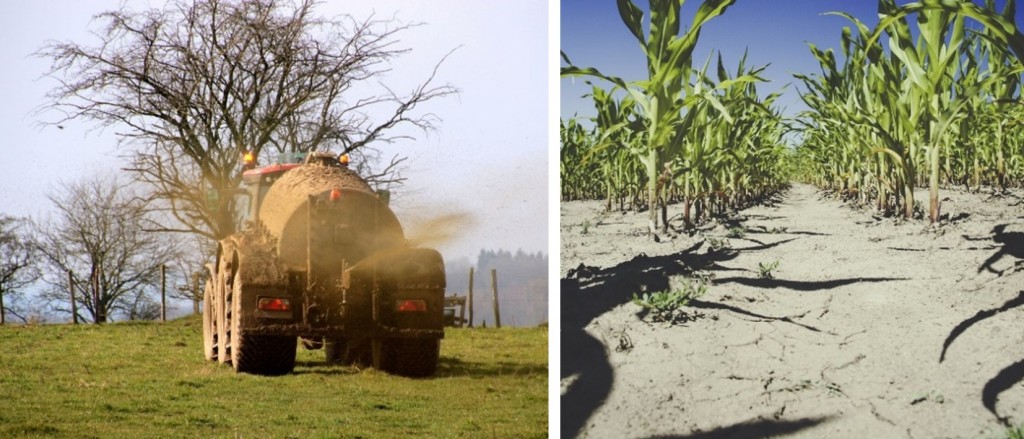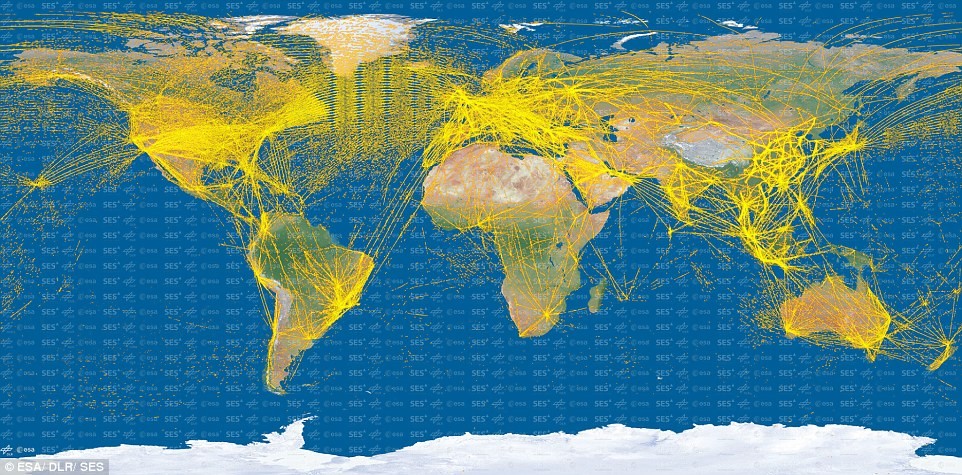 In a new study in the journal Nature Ecology and Evolution researchers argue that a slowdown of the CO2 and N fertilization effects on ecosystem carbon sequestration and the rapid emergence of negative ecosystem impacts from global climate change might drive a change from a fertilization-dominated to a warming-dominated period. Photos by Pixabay
In a new study in the journal Nature Ecology and Evolution researchers argue that a slowdown of the CO2 and N fertilization effects on ecosystem carbon sequestration and the rapid emergence of negative ecosystem impacts from global climate change might drive a change from a fertilization-dominated to a warming-dominated period. Photos by Pixabay
Natural ecosystems currently remove on average each year an amount of carbon dioxide equivalent to about one third of human-caused carbon dioxide (CO2) emissions from fossil fuel burning and cement production. There are numerous evidences which show that the efficiency of natural land ecosystems to absorb the increasing fossil fuel and cement emissions does not keep their path.
In a new study in the journal Nature Ecology and Evolution authors hypothesize that the progressive long term weakening of the natural land sink relative to fossil fuel CO2 emissions marks the beginning of a transition from a vegetation fertilization-dominated period to a period dominated by nutrient and climate constraints on plant growth, and larger climate change impacts (e.g., heatwaves).
There are many unknowns in the timing of this transition, so in light of the recent Paris COP21 agreement, a better understanding of climate change impacts on carbon stocks remains paramount to understand the level of climate mitigation required to achieve agreed temperature goals, indicates Prof Josep Peñuelas from CREAF-CSIC Barcelona.
Human fertilization changes productivity and carbon residence in ecosystems
Human activities result in increasing atmospheric concentrations of CO2, N inputs to ecosystems and temperature. This leads to enhanced metabolism of organism and lengthening the growing seasons. Plants can consequently grow more. The magnitude of carbon sinks and their duration depend both on the rate of increase of carbon inputs and on the residence time of the carbon being taken up by ecosystems explain Drs Shilong Piao from Academy of Sciences in Pekin and Jordi Sardans from CREAF in Barcelona.
Authors point out that several studies realized at global scale, in all biomes, suggest that trends of increasing sinks may be slowing down. A remaining question is whether in regions where carbon sinks may be slowing down, this is due to stalling productivity or to reducing residence times.
Likely limitations for enhancement of carbon sinks
The anthropogenic increases in CO2 and atmospheric nitrogen deposition are not matched by a similar increase in the inputs of other key nutrients such as phosphorus (P) and/or potassium (K). Current evidence suggests an overall shortage of P which will act as a limiting factor to meet the increasing demand for plant growth. “A better understanding of the factors that regulate exchanges between pools of “available” and “unavailable” soil P is critically needed”, said Prof. Ivan Janssens from University of Antwerp.
The higher nocturnal temperatures enhance night respiration, Prof. Josep Canadell pointed out. Moreover, severe regional heatwaves are also likely to become more frequent in a changing climate, and their negative impact on terrestrial carbon sequestration may thus also become important. “For example, the 2003 heatwave decreased European gross primary productivity by 30%, which resulted in a strong anomalous net source of carbon dioxide to the atmosphere; this effect is the equivalent of reversing four years of net ecosystem carbon sequestration in the European continent”, said Prof. Philippe Ciais from LSCE Paris.
In recent decades large-scale droughts have reduced seasonal NPP in the Southern and Northern hemispheres and weakened the terrestrial carbon sink. However, as Drs Marcos Fernandez-Martinez and Jofre Carnicer from CREAF-CSIC Barcelona point out, there is an inherent difficulty in quantifying the response of NPP to drought because it depends on the timing of drought during the growing season, and on ecosystem properties of resistance to drought.
Furthermore, it should be taken into account that most land use changes, fires, and harvests, which are expected to increase in the future reduce residence times, thereby reducing the sink capacity of the land biosphere as noticed by Prof Michael Obersteiner from IIASA Vienna.
Due to the above, the potential saturation or slower increase of the sink capacity of terrestrial ecosystems, or even its transition into a source of CO2, could be expected. Moreover, for Prof. Josep Peñuelas from CREAF-CSIC Barcelona, current climate models do not necessarily well represent extreme events due to coarse resolution (eg. extreme precipitation, wind storms and tropical cyclones) or to insufficiently constrained soil-atmosphere interactions. At this point, authors point out that these models could improve its prediction capacity through the addition of factors outlined above. “Such improved models could then help understanding the responses to different levels of global warming (especially in the range 1.5-3°C according to the Paris agreement and current intended policies)”, said Prof. Josep Peñuelas from CREAF-CSIC Barcelona.
Shift from a fertilization to a warming period
This study presents multiple evidences suggesting limits to the buffering capacity of the biosphere. Thus, Prof. Josep Peñuelas indicates that a slowdown of the CO2 and N fertilization effects on ecosystem carbon sequestration and the rapid emergence of negative ecosystem impacts from global climate change might drive a shift from an Anthropocene period dominated by fertilization to another period characterized by saturated fertilization and strong climate change.
For Prof. Peñuelas, although the climate has not yet changed dramatically in the Anthropocene, the coming decades will undoubtedly be different. Prof. Vautard from LSCE Paris explains that “A warming of 2 °C would slightly increase the frequency of 2003-like heatwaves in Northern France, but a warming of 3 °C would instead produce very different conditions, with one summer like that of 2003 occurring every three or four years, which would therefore affect the forests carbon sink in Europe much more than in the past”.
There is also the possibility of low probability but high impact phenomena which would lead to rapid positive feedbacks to the climate system (e.g. massive dieback of Amazon rainforest because of reduced rainfall or a dramatic temperature drop in the North Atlantic because of the collapse of the ocean current). “The occurrence of this phenomena is highly uncertain, particularly for low temperature scenarios. However, it is much more certain that we are currently entering a new warming period where ecosystems are put under increasing stresses”, said Prof. Josep Peñuelas from CREAF-CSIC Barcelona.
This study was funded by the European Research Council Synergy grant ERC-2013-SyG-610028
Journal Reference: Peñuelas, P., Ciais, P., Canadell, J., Janssens, I., Fernandez-Martinez, M., Carnicer, J., Obersteiner, M., Piao, S., Vautard, R., Sardans, J. 2017. Shifting from a fertilization-dominated to a warming-dominated period. Nature Ecology and Evolution.

